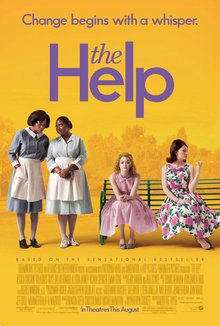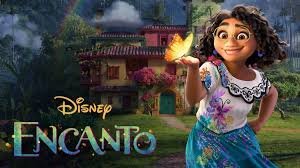Comprehensive Review of The Help (2011) From a Family Strengthening, Securing a Friendly and Protective Environment for Children®, and Rights-Based Parenting® Perspective

Introduction:
The Help, directed by Tate Taylor and based on Kathryn Stockett’s 2009 novel of the same name, is set in Jackson, Mississippi, during the 1960s Civil Rights Movement. The film tells the stories of Black maids who care for the children of white families while enduring the cruelty and systemic racism of their employers. Through the lens of characters like Aibileen Clark (Viola Davis) and Minny Jackson (Octavia Spencer), the movie reveals not only the deep racial divides of the time but also the intricate and often painful dynamics of parenting and caregiving.
Release Year: 2011
Director: Tate Taylor
Country: United States
Streaming Platforms: Available on platforms such as Amazon Prime Video, Netflix, and Hulu
Family Strengthening Perspective
From the family strengthening perspective, The Help underscores the powerful role caregivers play in shaping children’s lives. Aibileen, a Black maid, not only raises her employer’s child, Mae Mobley, but becomes her emotional and moral anchor. The film highlights how caregivers like Aibileen nurture, protect, and provide emotional support to children, even when their role is unrecognized and undervalued. This dynamic underscores the importance of family structures that go beyond biological ties and the significance of creating nurturing environments that transcend racial and economic boundaries.
However, The Help also reveals the cracks in family structures where children are often emotionally neglected by their parents. For instance, the white mothers in the film, like Elizabeth Leefolt, are disconnected from their children’s emotional needs, leaving the burden of care to their Black maids. This lack of parental involvement highlights the importance of Family Strengthening efforts, which advocate for emotional engagement, active participation in a child’s development, and the acknowledgment of all caregivers’ roles in a child’s upbringing.
The movie makes a compelling case for a collective approach to child-rearing, where both the biological family and secondary caregivers, such as maids or teachers, work together to provide children with the emotional and psychological support they need. It also stresses the need to value and protect caregivers within family units, ensuring they are treated with dignity and respect.
Securing a Friendly and Protective Environment for Children® Perspective
The Help sheds light on how critical it is to provide children with a Friendly and Protective Environment. Mae Mobley’s relationship with Aibileen is an example of how children thrive in environments filled with love, care, and positive reinforcement. Despite being treated indifferently by her mother, Mae experiences warmth and affirmation from Aibileen, which highlights the stark contrast between a nurturing caregiver and a disengaged parent. This suggests that all children, regardless of the circumstances, need a protective and loving environment to grow emotionally healthy.
On the other hand, the environment in the movie is fraught with the toxic influence of racism, discrimination, and systemic injustice. Children like Mae Mobley grow up absorbing not only the love and care from Aibileen but also witnessing the racial inequalities of the time. This duality points to the importance of ensuring that the protective environment is free from harmful social constructs like racism, sexism, and other forms of discrimination. It is vital for a child’s developmental process that they are shielded from environments that expose them to hateful or divisive ideologies.
The film also highlights how essential it is to protect caregivers, who are often responsible for maintaining a child’s protective environment. Aibileen and Minny endure significant emotional abuse and systemic injustice, which in turn impacts the environments they are able to create for the children under their care. This calls for a system that not only secures children’s well-being but also safeguards the caregivers who form integral parts of their support systems.
Rights-Based Parenting® Perspective
From the perspective of Rights-Based Parenting®, The Help emphasizes the need for parenting that recognizes and protects the inherent rights of every child, regardless of race, background, or socioeconomic status. The relationship between Mae Mobley and Aibileen, while nurturing, reveals a broader failure of her biological family to recognize her emotional and psychological needs. Mae is deprived of a mother’s love and care, which is her fundamental right as a child.
The film also brings attention to the rights of caregivers like Aibileen, who, despite being entrusted with children’s well-being, are not afforded the rights and dignity they deserve. Aibileen is a stand-in parent who is denied the basic human rights of fair treatment and respect, which affects her ability to parent fully. This scenario highlights the need for Rights-Based Parenting®, which not only ensures children’s rights are prioritized but also upholds the rights of those who care for children.
In addition, the racial divide in the parenting depicted in the film showcases how societal and systemic structures can infringe on children’s rights, especially children of color, who grow up in an environment that teaches them racial superiority or inferiority. The film calls for a reevaluation of parenting norms and practices to ensure that every child’s right to equality, love, and protection is preserved in a rights-based framework that rejects racism and discrimination.
Conclusion
The Help is a poignant reminder of the profound impact caregivers have on children and the importance of providing a nurturing, protective, and rights-respecting environment for their growth and development. From the perspectives of Family Strengthening, Securing a Friendly and Protective Environment for Children®, and Rights-Based Parenting®, the film underscores both the challenges and the opportunities for creating a better world for the next generation.
While it portrays the resilience of Black caregivers in the face of adversity, it also highlights the need for societal change to ensure that every caregiver and every child is treated with respect, care, and dignity. The lessons from the film call for a collective effort to create environments that foster emotional well-being, protect children from harm, and uphold the rights of all those involved in the critical work of nurturing the next generation.





